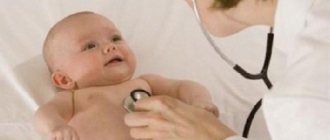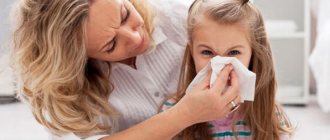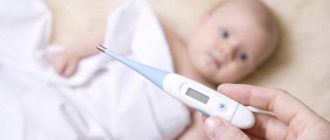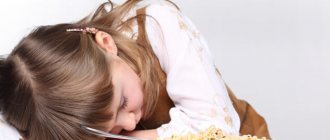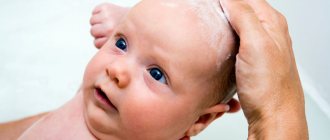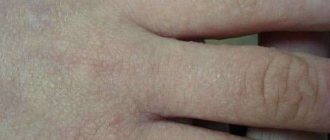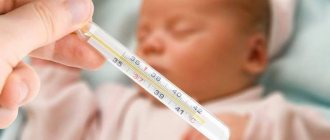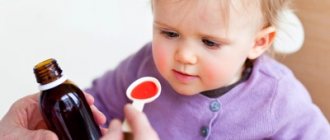The bodies of young children are often unpredictable. It happens that the child’s behavior does not cause any suspicion, the body temperature is within normal limits, but sometimes he coughs, and when he inhales, strange wheezing is heard in the lung area. As a rule, such symptoms indicate pathological development in the bronchi, lungs or throat. In medicine, a distinction is made between wet and dry wheezing, each of which requires not only an individual approach to treatment, but also explains the reasons that provoked this condition. We will learn from the article why cough with wheezing is dangerous in a child, how to treat it, and what the famous doctor Komarovsky recommends in this regard.
What is wheezing
First, let's look at what wheezing is and what it represents. The term “wheezing” refers to the presence of extraneous noise that manifests itself during inhalation and exhalation. It should be noted that listening to wheezing in children is much more difficult than in adults. It is especially difficult to listen to wheezing in children under one year of age, especially if their general condition and body temperature are normal. It is difficult to keep such children in one place for at least one minute, while also breathing calmly at the command of the attending physician. Wheezing is divided according to location: 1. Pulmonary, 2. Bronchial, 3. Nasopharyngeal.
In addition, wheezing can be periodic and constant, crepitating and whistling. Doctors call wheezing that is heard during exhalation as expiratory, and when inhaling as aspiratory.
Wheezing in the throat of a newborn
The content of the article
Also, the passage of air becomes difficult when the lumen of the airways narrows due to spasm of smooth muscles. The baby may also wheeze due to some congenital anatomical features of the respiratory system.
It is necessary to distinguish between the concepts of “wheezing” - noises during breathing, and “hoarseness” - a change in the timbre of the voice (hoarseness).
Let's talk about why a newborn may become hoarse, and also discuss the causes of breathing noise in children under 3 years of age.
Cough with wheezing without fever
Often, an increase in temperature without side symptoms causes increased alertness among parents. What to do if the body temperature is within normal limits, but the child has a dry cough with wheezing? First of all, you need to call a doctor. A normal temperature with accompanying symptoms such as coughing and wheezing can be much more dangerous than just an elevated temperature. Such symptoms may indicate the development of a fairly serious disease, in particular pneumonia. Let's look at how pneumonia develops in children step by step:
1. The child is capricious and lethargic. 2. Signs of headache appear, 3. Loss of appetite (infants refuse breast milk). 4. Frequent stools and frequent regurgitation. 5. Shortness of breath. 6. Blueness and swelling in the eye and nose area. 7. Cough with runny nose. 8. Wheezing.
Important! A cough with wheezing in children may indicate the development of a serious illness.
Causes
A hoarse voice and cough in a child are often signs of laryngitis. Laryngitis is a disease characterized by inflammation of the mucous membrane of the larynx. A hoarse voice and cough occur due to swelling of the vocal cords located in the laryngeal cavity. Depending on the cause, two forms of the disease are distinguished: infectious (viral, bacterial) and allergic laryngitis.
Typically, a hoarse voice and cough are signs of inflammation of the larynx.
Viruses
In most cases, laryngitis is viral in nature. Hoarseness and cough can be symptoms of a cold and ARVI.
Many microorganisms can lead to inflammation of the larynx, but the most common is the parainfluenza virus.
In addition, laryngitis can occur with influenza, measles, and herpes. Viral laryngitis is rarely isolated and often occurs together with tracheitis in the form of laryngotracheitis. A child can become infected through normal talking, coughing, or sneezing, since viruses are transmitted by airborne droplets.
Bacteria
Bacterial laryngitis is less common in children, but is more severe. The cause of inflammation can be staphylococci, streptococci and pneumococci. With bacterial laryngitis, intoxication syndrome, which is caused by a purulent process, comes to the fore.
Allergy
A hoarse voice and cough in a child without fever in most cases indicates non-infectious laryngitis. Allergens can be dust, pollen, medications, animal hair, or household chemical vapors. A feature of allergic laryngitis is that the disease worsens upon contact with an allergen.
Vocal cord overstrain
Another reason why a child develops a hoarse voice and a dry cough is prolonged overstrain of the vocal cords. For example, if a child screamed the day before symptoms appeared.
Stenosing laryngotracheitis
With stenosing laryngotracheitis, not just inflammation of the larynx occurs, but severe swelling and narrowing of the glottis.
The child develops signs of respiratory failure: inability to take a breath, rapid breathing, pale or blue skin.
Stenosing laryngotracheitis is a life-threatening condition. The appearance of its signs is a reason to call an ambulance. In this case, you cannot hesitate.
Treatment of cough with wheezing
Cough with wheezing without fever must be treated correctly. Never self-medicate, but first of all, call a doctor who, based on the collected medical history, will determine the true cause of the disease. To do this, the child needs to undergo a urine, blood and sputum test, and undergo fluorography, which will confirm or refute the doctor’s suspicion of the development of an inflammatory process in the lungs. Wheezing is treated with antibiotics. In addition, the room in which the patient is located must be systematically ventilated and wet cleaned. Remember! Dry indoor air causes coughing even in a healthy child. The diet of a sick child should include fruit drinks, teas, herbal decoctions and dried fruits. In addition to drug treatment, it is also necessary to carry out breathing exercises, which stimulate the development of the lungs.
Wheezing in an infant Komarovsky
Read on topic:
Many mothers are concerned about wheezing that babies can make some time after their birth. Some wheezing in babies is absolutely harmless and does not pose any danger, while some, on the contrary, are the first “bells” of disease. What is what, let's figure it out.
It would seem that everything was fine: the baby eats well, is gaining weight, is not capricious, has not been in a draft, but the child has wheezing. They can only appear during sleep or eating. In this case, you should not immediately panic.
Such wheezing in an infant is very easily explained from the point of view of the child’s physiology. An infant wheezes during sleep or feeding simply because the tissues of his airways are not yet sufficiently formed, and the airways themselves are still quite narrow.
The wheezing will go away on its own by the age of one and a half to three years, when the cartilage in his larynx is sufficiently formed and strengthened.
There is another reason for wheezing in babies - dry air. This can happen if a newborn sleeps or plays in a room where there is “no air to breathe.”
In summer, when it’s hot and in winter, when it’s cold, overly caring parents, fearing that the baby will catch a cold, neglect ventilation, in winter they try to “heat” as much as possible in the room where the child is, and in summer, when it’s hot outside, they close all the windows. In this situation, it’s enough just to remember to humidify the air.
To do this, you can use regular air humidifiers, or hang wet towels on the doors, or simply place a container of cold water in the room, but if you have other children in the family, the latter method will not suit you. Nimble children will definitely find this container of water and spill it.
Wheezing in an infant can be heard not only from the chest, but also from the nasal passage. Any person develops mucus in the nasal passage, because the human nose is a kind of filter for the air that we breathe.
In older children and adults, this mucus comes out of the nasal passage freely and does not linger there. But in an infant, it cannot come out independently and freely, because the nasal passage is still too narrow, and the baby does not yet know how to blow his nose.
Mucus, accumulating in the nasal passage, dries out and turns into dried crusts in the nose, which interfere with free breathing, as a result of which the baby begins to wheeze.
How to help a baby?
After daily bathing, crusts in the nasal passage must be removed with a cotton swab, and to make this easier, you need to use baby drops based on sea salt or a spray based on sea water. This procedure must be carried out daily.
During the day, you should take your baby for walks in the fresh air more often. But no walks in windy weather, otherwise the baby may get sick and the wheezing will only get worse. At home, the baby’s leisure time should be organized so that he does not lie down all the time, otherwise this can lead to “stagnation” and swelling in the airways, which will increase the baby’s wheezing.
In the cases discussed, when the baby wheezes, no medical intervention or drug treatment is required. However, at your next appointment with your local doctor, be sure to inform him about them. The doctor must carefully examine the child and make sure that the baby’s wheezing is not associated with any disease.
What can cause wheezing in infants?
Infection or pathogenic bacteria.
A newborn's body is still too weak; he can easily catch any infection. Therefore, if a person is sick or has just recovered from a viral disease (in which case he is still a carrier of the disease), you should not invite him to visit.
The baby may wheeze under the influence of allergens.
This factor must be taken into account if someone in your family suffers from allergies or asthma.
- If there is an inflammatory process in the respiratory tract, which is a consequence of hypothermia.
- The child simply choked on something or a foreign body got into the respiratory tract - do not leave the baby alone with small toys, sweets and other things that can cause choking.
To prevent your child from catching a cold or wheezing, follow a few simple rules when you walk with him on the street:
- Dress your baby according to the weather.
If a baby is dressed too warmly, he will simply sweat, and a wet baby can easily get sick. And don’t dress it too “lightly” if it’s cold outside; many mothers justify this, believing that this is how the child hardens. That's bullshit. The baby will simply freeze or get hypothermia. You need to harden your child using a special method, and not by walking around naked. - If your child is lying in a stroller during a walk, make sure that wind or snow does not blow into the stroller
- Avoid contact with children and their parents whose families have recently had a viral disease.
- Do not leave the stroller with the child in a draft
The table below discusses infant wheezing, which is accompanied by any symptoms, possible causes of this condition and measures that the mother needs to take.
Description of the child's condition
Wheezing in a baby
Young children in the first year of their life are very sensitive to various external influences. But they are also protected enough by nature to survive. Parents need to be observant, not to panic in vain, but also not to forget that a baby is built somewhat differently than an adult and requires proper care.
Wheezing in a small child may appear immediately after birth. Most often, this does not indicate anything serious, but in order to be one hundred percent sure, it is best to check it again.
If your doctor confirms that everything is fine, then you can cope with wheezing on your own. And for this you don’t have to use any medications or anything.
The most important thing is not to panic and organize proper care for your child.
Why wheezing occurs
Wheezing in a baby can be a temporary and completely natural reaction to saliva. which the child only learns to swallow at three to four months. At this time, the secretion glands begin to work normally, and the body adapts to this fact. In this case, the sounds will come from the throat of a small child.
Nasal wheezing occurs when the nasal passages are still too narrow and dust quickly accumulates in them. In this case, it won’t hurt to clean your nose and monitor the humidity in the apartment. Dry air can cause many mild disorders and provoke more severe illnesses.
Less commonly, wheezing can be caused by allergic reactions, heart disease and other serious disorders.
In addition to this, there are other, more serious reasons that can cause this phenomenon. Doctors include:
In order to accurately exclude possible diseases, you should consult a doctor and if he says that everything is fine, this means that it is time to completely reconsider your views on caring for the baby. Most likely, you are too afraid for him, do a lot of wrong things, and as a result, the child begins to wheeze.
What to do and how to treat
If your baby’s wheezing is associated with an allergy or some kind of inflammatory process in the respiratory tract, then you cannot do without medications.
The same applies to infection - you will have to resort to antibacterial therapy and then, most likely, you will be able to get rid of wheezing. However, self-treatment is not recommended.
As mentioned above, very often the cause of wheezing is dry air in the room. Young mothers are afraid that their baby will get sick, and therefore do not think at all about the fact that the room needs to be well ventilated and often take their baby out for a walk.
You can make the air in the room more humid using a pan of water, a damp cloth, or using a special humidifier. Remember that this will not only relieve the baby from wheezing, but will also prevent him from getting other more harmful and serious diseases.
In addition, it is worth observing the required temperature, which is not too high - your baby’s room should not be too hot, the maximum temperature is twenty-one degrees, the minimum is eighteen to nineteen degrees.
Don’t forget about constant wet cleaning to keep the room as dust-free as possible. It is recommended to remove all items that accumulate too much dust - they have no place in your baby's room.
Failure to follow these rules leads to crusts appearing in your baby’s nose, which causes wheezing. In order to get rid of them, it is enough to follow the above rules and periodically clean your baby’s nose. To combat crusts, you can purchase special drops at the pharmacy, which wonderfully moisturize the nasal passage.
When your child wheezes, monitor the general condition of the body. If your body temperature, appetite and sleep are normal, then you probably have nothing to worry about.
But if it is possible to consult a doctor and listen to the baby, this should be done. At least for my own peace of mind. And, of course, not to miss diseases such as bronchitis.
After all, this is fraught with serious consequences and complications.
A sharp deterioration in a child’s health should cause an immediate response - calling a doctor at home or even emergency care.
If your baby is cheerful and feels great, then there is no need to worry – just create suitable conditions for him.
It is believed that by the age of three, all these unpleasant wheezing in your baby will go away, but provided that you provide him with an active life and closely monitor his health.
What to do if your baby suddenly starts wheezing
Quite a large number of mothers are faced with such a problem as wheezing in their infants. They appear frequently and can even occur immediately after birth.
Also, wheezing in infants may be stronger when, for example, they are sleeping or eating.
If the pediatrician has not found any serious problems causing wheezing in an infant, then the parents themselves may well be able to help their child get rid of this unpleasant phenomenon.
Causes of periodic wheezing in infants
1. Swelling on the membranes of the respiratory tract.
2. Fluid that has accumulated in the respiratory tract.
3. Some foreign body that has entered the respiratory tract.
4. The air is too dry.
Also often the reason is a purely natural feature of children's airways - they are too narrow, air cannot freely enter the lungs, or simply the larynx has not yet become hard enough, and because of this, the nasopharynx begins to vibrate strongly when breathing.
How to treat wheezing in a baby?
It is necessary to treat wheezing in an infant with medications only when the cause of the wheezing is caused by allergens that affect the respiratory tract, or by an inflammatory process there.
In such cases, doctors most often prescribe drugs to the child that are in the steroid group, which help treat the baby. Also, sometimes a baby wheezes when an infection caused by bacteria enters the body.
Then it is best to treat the baby with antibacterial drugs.
A child wheezes due to dry air: how to help?
In most cases of wheezing among infants, the cause is the air in the room in which the child sleeps is too dry for the small lungs. Most often this happens in winter, because then heating devices are turned on in all rooms, including the baby’s bedroom.
In this regard, small crusts begin to form in the baby’s nose due to a large accumulation of mucus. They cannot come out naturally from the baby’s nose, because they linger in its narrow and thin nasal passages, causing wheezing in the baby.
If this happens, then the main task of the baby’s parents is to provide him with optimal conditions for sleep, that is, to humidify the too dry air. This can be achieved using very simple and inexpensive methods: for example, placing a container filled with water in the baby’s bedroom. Or you can wet some cloth in the child’s room, which will also help.
You can, however, make your work easier: buy an air humidifier, because they have recently become very popular. These are devices that allow you to normalize the humidity level in rooms.
Wheezing
Reginamaris wrote: There was less wheezing for two days,
So did the pediatrician hear wheezing or harsh breathing?
Reginamaris wrote: Now the wheezing is very strong,
This fall, does the doctor hear strong wheezing during auscultation or do you hear it while the child is breathing?
When an inflammatory process begins in a child’s respiratory tract, mucus begins to be released there. The doctor may hear harsh breathing. Then you moisturize and liquefy this mucus.
Naturally, the doctor begins to hear wheezing - this is liquefied sputum walking through the respiratory tract.
You need to prevent this mucus from drying out (humidify the air and drink plenty of water) and help cough it up (if there is no fever, then massage).
This all applies if the child is diagnosed with bronchitis.
https://www.youtube.com/watch?v=a7NZ-DrAD1k
If a child has snot, and when he breathes, you hear as if he is wheezing - this is just air making its way through the mucus when breathing.
Those wheezes that are in the bronchi, you just won’t hear - only a doctor during auscultation.
Therefore, your actions: humidify and ventilate the air at home, give the child plenty of water, instill saline in the nose, do a massage (if wheezing in the bronchi!)
If a child only has snot, is there any point in inhalations?
Vibrocil - don't overdo it! It cannot be dripped for more than 5 days. And in general, try to drip only when there is a need (there is
swelling that prevents the baby from sleeping, for example, or sucking if you are still breastfeeding).
Protargol is not needed at all - it dries out a lot. And you need to moisten your nose so that the mucus does not dry out, so that the snot pours out, so that the mucous membrane copes with viruses.
And please try to figure it out and write correctly - did the doctor hear wheezing, what diagnosis did you make, what do you call wheezing? Does the child have a cough or fever?
Sources: girafejournal.com, mamyideti.com, www.syl.ru, www.komarovskiy.net
Next articles:
August 23, 2020
No comments yet!
Source: https://pediatrsovet.ru/otvety-roditeljam/hripy-u-grudnogo-rebenka-komarovskij.html
Traditional medicine for the treatment of cough with wheezing without fever
If the doctor’s suspicion of pneumonia is not confirmed, then you can get rid of a cough with wheezing using folk remedies. They will help you: honey with milk, herbal decoctions, rubbing, massage, breathing exercises, inhalation. Inhalation sessions on potato peelings or pine buds are excellent for treatment. Also, traditional medicine suggests brewing pine buds in milk at the rate of 1 tbsp. kidneys per 1 liter of milk. You need to take this medicinal decoction every 2 hours, 1 tablespoon. Children love the taste of eggnog and eat it with pleasure. True, when a child is a little sick, even such a delicacy is not entirely to their taste. You need to prepare eggnog according to the following recipe: mix a tablespoon of honey with butter and add 2 yolks. Grind until white and give the patient 1 tbsp before meals.
Attention! If a child is allergic to honey or eggs, then preparing eggnog for him is strictly contraindicated.
Diseases with the symptom of wheezing and what to do
If the baby wheezes, has snot and cough, the temperature rises, the baby behaves lethargically, refuses to eat, then most likely the diagnosis will be “acute respiratory viral disease.” In this case, only a doctor should decide on the necessity and correctness of treatment. All that is required of you is not to force the child to eat, provide him with plenty of fluids and strictly follow all the doctor’s recommendations regarding the treatment of a wheezing child.
If the newborn wheezes quite strongly, coughs with a “barking” cough, wheezes when he breathes, and when the baby inhales, the intercostal spaces are drawn in, and a high temperature (above 38.5 degrees) is observed, then doctors, as a rule, talk about pneumonia. If such symptoms are noticed, it is necessary to call a pediatrician to make a correct diagnosis and prescribe adequate treatment. It often happens that the baby has to be hospitalized.
If the child’s voice is hoarse, the baby is breathing heavily, he has a fever, a strong dry cough and “whistles” in the chest, while all of these symptoms are aggravated at night, then you can suspect the baby has croup (difficulty in breathing, which is caused by inflammation and narrowing of the chest). lumen of the upper respiratory tract). When such an attack begins, it is necessary to call an ambulance or a pediatrician. While waiting for medical help, the child should be allowed to breathe humidified air. To do this, you can use a humidifier or fill the bathroom with hot water to make steam and bring the child into the bathroom for a couple of minutes. Afterwards, drip the nose with vasoconstrictor drops and provide an influx of cool fresh air. You can also give your baby anti-allergy drops, for example, Fenistil.
Children under one year of age may develop a disease such as bronchiolitis. In this case, small areas of the bronchi become inflamed. In this case, there is a strong cough that does not subside for a long time (sometimes several hours), difficult hoarse breathing, there are signs of a cold such as snot and sore throat, which is why the baby refuses to eat, is very irritated and capricious.
If the baby still has wheezing after a runny nose, the baby snores at night, his nose is constantly stuffy, and one of his relatives suffers from asthma or allergies - this may indicate that the child has developed bronchial asthma. You need to consult a pediatric allergist and carry out the necessary examinations for further treatment.
Also, when the baby breathes through the mouth, he has a runny nose, he snores in his sleep, suffers from frequent colds, clear nasal discharge and otitis media, is whiny and irritable, it is likely that his adenoids are enlarged or he is allergic to some irritant. In this case, only the pediatrician will be able to determine the cause of the child’s unsatisfactory well-being, that is, determine whether it is a runny nose, allergies or inflammation of the adenoids. After making the correct diagnosis, the doctor will be able to prescribe adequate therapy.
During illness, a child should drink a lot, this will reduce intoxication of the body. And also breathe fresh and humidified air. Dr. Komarovsky constantly emphasizes this. He argues that during the acute period of illness (fever and severe malaise), it is necessary to provide such conditions at home, and after the onset of a lasting improvement in well-being (even if there is still a cough with phlegm, but the temperature has dropped, the child has regained his appetite and good mood) do not forget about walks in the open air. You need to remember that a hoarse baby can be taken outside for 20-30 minutes in windless, sunny weather and be sure to choose the right clothes so as not to overheat or overcool the child.
Particular attention should be paid to the fact that the above describes not exact diagnoses, but their possible variants, in which the child may become hoarse. Therefore, it is strictly not recommended for parents to independently treat wheezing in their baby, much less give him any medications without consulting a pediatrician! Such an irresponsible approach will pose a threat to the life and health of the baby. You can help a small child if you accurately determine the main cause of the illness. Therefore, you should not refuse additional examinations if the doctor suggests them.
source
Compresses
If a child has a cough with wheezing, difficulty breathing, and the temperature is within normal limits, then compresses can be used to alleviate his condition.
The most convenient and simplest type of compress is potato. Boil the peeled potatoes in water without salt and mash thoroughly with a mortar. Place the potato mixture in a plastic bag and wrap in several layers of soft towel. The compress should be warm, but under no circumstances hot. Place on baby's chest and hold for 1 hour. From time to time, adjust the temperature of the compress by unrolling the towel. It is recommended to apply this compress at night.
Mustard-honey compress flatbread is excellent for coughs with wheezing. Mix honey with mustard powder, add a little vegetable oil and knead the flatbread with flour until it has a soft consistency. Place the cake on the baby's chest, cover it with plastic and wrap it with a gauze diaper. With such a compress, the child can sleep until the morning.
Attention! If you are allergic to honey, a mustard-honey compress is strictly contraindicated.
Physiotherapy
For a dry cough with wheezing, when sputum is difficult to separate, doctors recommend physical exercise. Mostly expectoration exercises are performed upside down. If we are talking about infants, then you can take him by the legs and lightly shake him upside down. After this, place the child on the mattress and massage the back and chest with tapping movements of the fingers. Then spread your arms to the sides and bring them together on your chest. Older children, especially when there is no fever and they are active, enjoy doing the “walking on their hands” exercise. To do this, lift the baby's legs with your hands and invite the baby to walk on his hands on the rug. If there is a horizontal bar in the house, you can also invite the baby to hang upside down on it.
The baby is wheezing in the throat - causes and treatment 2020
This term usually refers to extraneous noises heard during breathing. They can be more difficult to identify in children than in adults. Firstly, the sounds made by the respiratory organs at different ages are different (which is considered normal).
For example, children from one to seven often experience symptoms characteristic of ARVI in adults. It's about hard breathing. They go away on their own with age.
Secondly, wheezing in a child without fever can be difficult to listen to, since the baby feels well and does not want to sit quietly for a whole minute and breathe at the command of parents or doctors.
Pathology of the gastrointestinal tract
We are talking about pharyngolaryngeal reflux, caused by regularly repeated reflux of acidic stomach contents into the middle and upper part of the esophagus, and from it into the oral cavity.
Once on the mucous membrane of the pharynx (as a rule, this happens at night), gastric juice, pepsin or bile cause inflammation - pharyngitis, causing cough, hoarseness, soreness, and foreign body sensation.
Exit : Undergo an endoscopic examination of the stomach (gastroscopy) or a barium x-ray of the esophagus. If we talk about treatment, which includes taking proton pump blockers (reducing the production of gastric juice) and prokinetics (improving the contractility of the lower esophageal sphincter), changes in the child’s lifestyle also bring a good effect.
He will have to: not eat before bed, not lie down or bend over after eating for 1-2 hours, sleep with the head of the bed raised, give up carbonated drinks and tight clothing that tightens the epigastric region.
What are they?
Wheezing in children, as in adults, is divided primarily according to its localization. They are pulmonary, bronchial or tracheal. There are often cases when extraneous sounds when breathing come from the nasopharynx or throat. This happens after long screams (they say that the child is hoarse). Either the symptom is a clear sign of an allergic reaction or an incipient acute respiratory viral infection.
Wheezing in a child without fever, regardless of the source, does not require emergency medical attention (provided that he is able to breathe independently and there are no signs of asphyxia). However, it won’t hurt to show it to your treating pediatrician, especially in cases where neither the cause of noisy breathing nor its source is clear.
In addition to localization, wheezing can be dry and wet, constant and intermittent, whistling and crepitating. Sometimes they are heard when you inhale (then they are called inspiratory), and sometimes when you exhale (expiratory).
Chronic tonsillitis, adenoiditis
Provoking the development of sinusitis (inflammation of the paranasal sinuses), laryngitis, bronchitis, pneumonia, inflamed and enlarged palatine and pharyngeal tonsils are a serious hindrance to the voice, in the formation of which the entire apparatus of its owner takes part: the larynx with folds, the naso-oral pharynx , mouth and nose with paranasal sinuses, bronchi and lungs.
Solution : Adequately treat adenoiditis and tonsillitis in children. And if drug and/or physiotherapy is ineffective, enlarged tonsils need to be removed.
Experts do not share common parental concerns about the pointlessness of such a procedure.
In leading Russian clinics, both adenoids and tonsils are removed in a new way, under anesthesia, under the control of modern equipment, which avoids subsequent relapses of the disease.
How to hear wheezing?
Medical workers do this using a special device - a phonendoscope. It allows you to locally amplify sounds. Often, pulmonary or bronchial wheezing can be clearly heard if you simply lean your ear against your back or chest. There are also diseases in which gurgling in the chest cannot be ignored even at some distance from the patient.
If the source of the sound is the throat or nasopharynx, the noise is usually accompanied by pain, voice distortion and difficulty breathing.
Wheezing in a baby
In early childhood (especially up to one year), it can be very difficult to diagnose and treat diseases. The baby cannot say what exactly is bothering him. At the same time, wheezing in an infant can be the result of either prolonged crying or a complex (and sometimes even dangerous) disease.
It is not always easy for a mother to understand whether her baby is choking or has simply been crying for too long. Doctors advise paying attention to other symptoms. If the baby, once in your arms, immediately calms down, looks healthy and behaves normally (despite wheezing), there is no need to worry.
In the case when a bluish tint appears on the skin, and breathing is clearly difficult, you need to sound the alarm. This may be a symptom of a cold or infection, or a more serious illness. Such signs also sometimes indicate that foreign objects have entered the respiratory system.
It is important that in all these cases emergency assistance from a specialist is required.
Laryngeal papillomatosis
This is a dangerous disease caused by the human papillomavirus (HPV), which the child receives during childbirth, passing through the birth canal of an infected mother.
In some cases, laryngeal papillomas (growths with jagged edges, resembling cauliflower in shape) increase in size so much that they not only cause hoarseness, but also... completely block the airways.
Article on the topic
Source: https://DokMakarov.ru/terapiya/novorozhdennyj-dyshit-s-hripom.html
